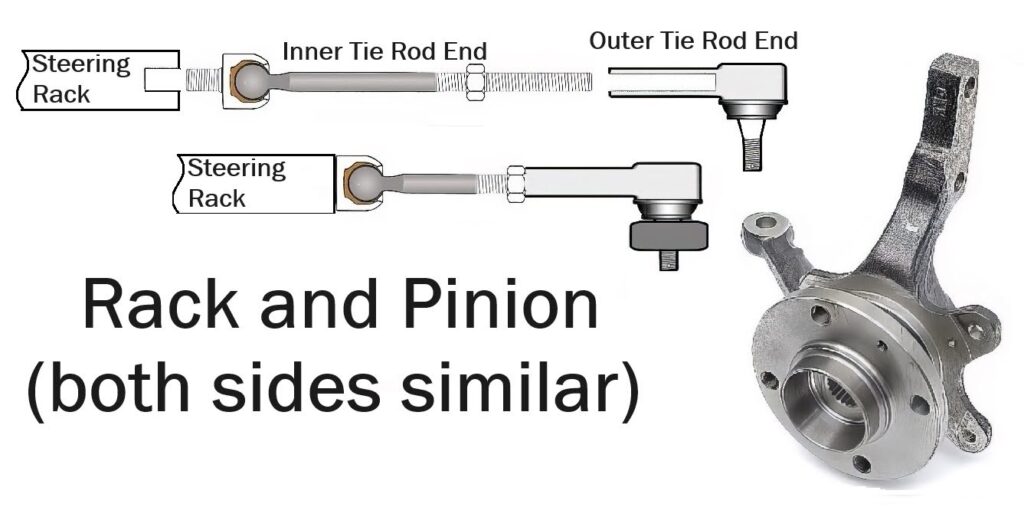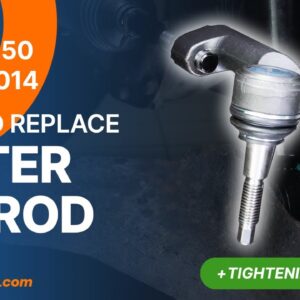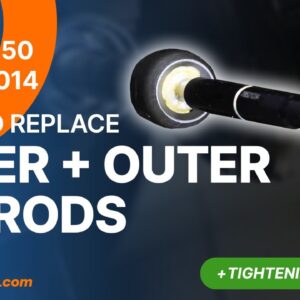Q: Where is the Tie Rod Typically Located?
A: Tie rods are part of your vehicle’s front suspension and steering system. They link your car’s steering wheel to the front wheels. Tie rods come in two parts, the inner tie rod and the outer tie rod.
Tie rods are located between your vehicle’s front wheels. The rods are connected to the spindle, which connects to your front wheel. To access them, you’ll need to go behind your front wheels.

The location of the tie rods can depend on the vehicle’s make and model, but it will for the most part stay consistent. The outer tie rod of the 2002-2007 Jeep Liberty vehicles is behind the wheels, just like the tie rod of the 2003 to 2005 Honda Civic.
The two illustrations below show the difference between the tie rods on the two primary types of steering systems. On both types, the outer tie rod end is connected to the steering knuckle, which is the supporting fixture for the hub and bearing assembly that carries the front tires and wheels.


Tips on How to Access the Tie Rod
To make accessing your vehicle’s tie rod easier, you’ll want to use either a vehicle lift or a car jack and stands. You’ll also need an inner tie rod tool, which can be bought or rented from auto parts stores. Once you get behind the wheels, you can begin disassembling the tire rod, starting at the ends. Remove the cotter pin and castle nut, then pop out the tire rod end.
If it’s just the outer tie rod you’re after, you can unscrew it from the inner tie rod by twisting the jam nut. Next is the rubber boot on the inner tie rod. Two clamps hold it in place. The clamp closer to where the outer tie rod is will have a pinching clamp and the one farther into your vehicle’s chassis is a screw-on clamp. You can use grease to get the boot off easier. After that, you can use the inner tie rod adapter to remove the inner tie rod. Be sure to remove the connector pin if you see one.
You can also check out these videos for tips on how to replace your inner and outer tie rod:
Any information provided on this Website is for informational purposes only and is not intended to replace consultation with a professional mechanic. The accuracy and timeliness of the information may change from the time of publication.



























